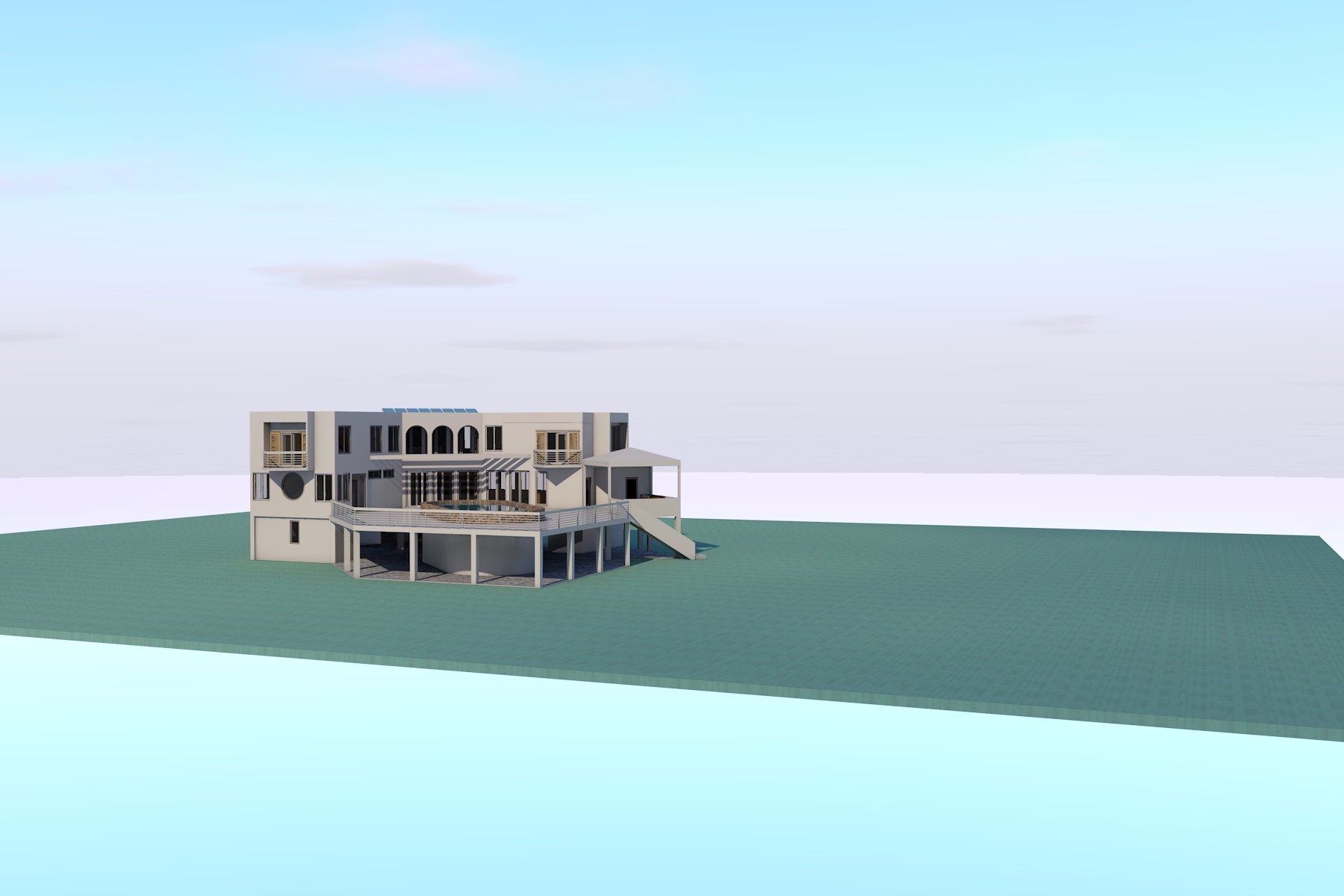Affordable Strong House using DIY Do It Yourself Construction
We design for do-it-yourselfers by specifying strong and extremely durable materials.
We have designed energy independent safe homes all over the continental USA, in the Caribbean, and in Africa. We consult using email and telephone. The first thing we do is create a dedicated secure web portal for your project where drawings and data can be stored and transferred.
Using our 3D design program, we create a Building Information Model (BIM), of your project. You can fly through this model on your pad and computer. This 3D capability clarifies the design which helps in making decisions. We provide:
- concept drawings for your approval
- consult with you along the way
- construction cost control using itemized labor & material estimate
- guaranteed code compliant plans for your building permit submission
- specifications and detailed working drawings for construction
- schedules showing types and quantities of materials to purchase.
Structural Continuity is the Key to Extreme Strength and Affordability
Most structural damage caused by hurricane, earthquake, flooding, and storm surge occurs at the joints between building materials and structural elements:
- between foundation and wall
- between wall and roof
- between wood and concrete
- between masonry and concrete
- between wood and roofing
- at and around fasteners.
By embedding a galvanized steel framework in the concrete footing, and coating the entire framework with Ferrocement, you can create a continuous structure without material changes and joints between building elements. This application of Ferrocement engineering saves about 70% of the concrete required to create a super-strong disaster resistant structure. It requires less work to build, and saves both time and money.
A continuous uni-body structure requires less material than one made of seperate elements fastened together.
What is a Survival Home?
Survival designs incorporate structural technology to make your house strong enough to survive:
- earthquake
- wildfire
- hurricane
- storm surge
- flooding and storm surge.
Survival technologies are incorporated so that you and your family can survive during the period after a disaster when local infrastructure has failed:
- contaminated water supply
- electrical grid is down
- impassable roads
Survival technologies include:
- Solar electrical power generation, storage & distribution such as with a Tesla whole house battery
- Solar heated hot water supply
- Rainwater catchment & storage
- Solar powered rainwater purification, storage & distribution
- Solar powered refrigeration for emergency food storage.
Macdonald Architects designs survival structures and specifies survival technologies for owner-builders.
